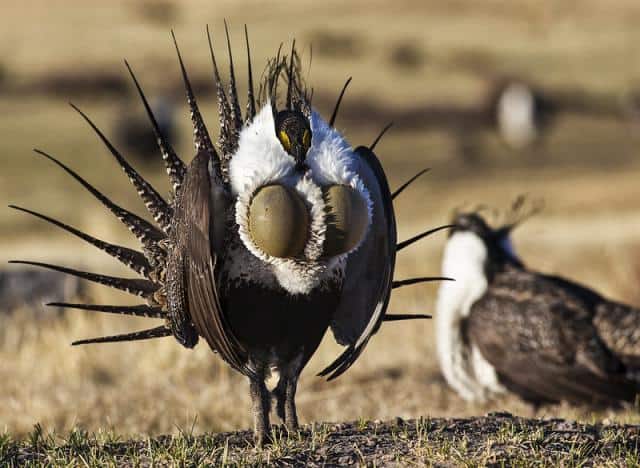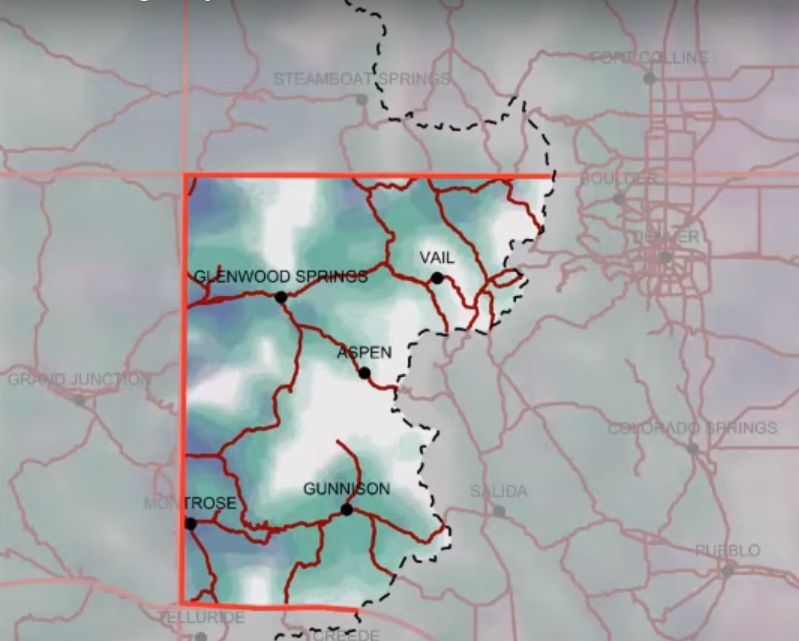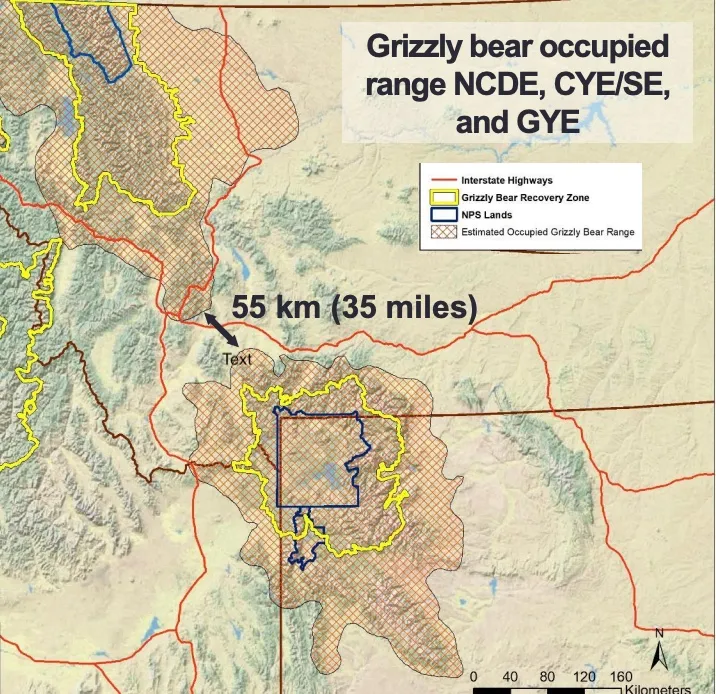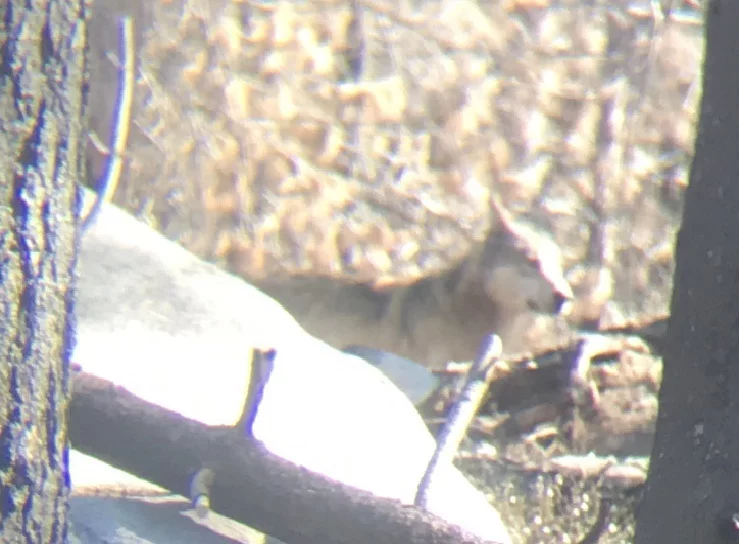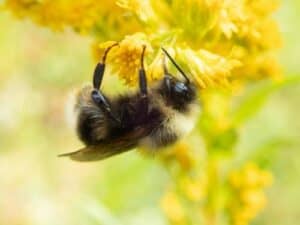
I believe the Rio Grande revision is one of only two developed under the 2012 Planning Rule that have been litigated (the Flathead being the other). Two lawsuits were filed against the Rio Grande in November 2021. One of them (Defenders of Wildlife v. U. S. Forest Service) was decided a year ago by the district court and is on appeal to the 10th Circuit. That case is worth some discussion, so here it is. There has not yet been a district court hearing for the other case (San Luis Valley Ecosystem Council v. Dallas). (The Colville revised plan litigation involved the previous 1982 planning regulations.)
On January 27, 2023, the district court upheld the Rio Grande revised forest plan’s compliance with the Endangered Species Act and NEPA for Canada lynx. The judge framed the issue in this case as whether the Forest failed to “protect the lynx by inadequately limiting logging in the Forest under a revised forest plan in violation of the ESA, the National Environmental Policy Act (“NEPA”), and the Administrative Procedure Act (“APA”).” The court found no violation of ESA in the Biological Opinion by the Fish and Wildlife Service, and it summarily dispensed with the NEPA and ESA claims against the Forest Service as being based on “substantially the same arguments.”
The case involves changing forest plan management direction for Canada lynx from that included in the Southern Rockies Lynx Amendment in response to insect-killed trees and blowdown over a large portion of the Forest. The opinion asserts at the outset that, “Petitioner’s position is fundamentally flawed for at least three reasons.” Two of these are troubling.
The court minimizes (or perhaps rejects) the need for ESA consultation on national forest plans because they are “programmatic,” and (citing the BiOp), “no immediate consequences occur directly to Canada lynx caused by the proposed action,” and therefore “implementation cannot be said to jeopardize the lynx directly.” If plan cannot jeopardize a species, then there should be no need to consult.
These statements and this conclusion would be contrary to national Fish and Wildlife Service policy on consultation on “programmatic” or “tiered” decisions. Forest plans are decisions that both promote activities that could adversely affect species through desired conditions and objectives, and limit those activities through standards and guidelines. Consultation on such decisions is based on the effects that would be allowed to occur using the “design standards” in the decision. There is no requirement that consequences potentially leading to jeopardy be “immediate.”
The court’s conclusion is also at odds with other cases, which emphasized the broad scope of agency “actions” subject to ESA. The 10th Circuit has determined that, “Much like the promulgation of a regulation, we have little doubt after Norton that the act of approving, amending, or revising a LRMP constitutes “action” under § 7(a)(2) of the ESA.” Forest Guardians v. Forsgren, 478 F.3d 1149, 1154 (2007). The 9th Circuit held, “RMPs are actions that “may affect” the protected salmon because the plans set forth criteria for harvesting resources within the salmon’s habitat.” Pacific Rivers Council v. Thomas, 30 F.3d 1050, 1055 (1994). A requirement to consult on forest plans must presume that there could be some basis for finding substantive violations of ESA, so this court’s finding of a fundamental flaw here seems fundamentally flawed.
A second “fundamental flaw” results from the fact that, “lynx habitat in the Forest amounts to just over 2 percent of the lynx habitat in the contiguous United States,” and “none of that habitat was designated as critical.” Therefore, “even if the lynx were extirpated in the Forest, that would not significantly affect the status of the lynx across the contiguous United States.” This raises questions about the effectiveness of applying ESA’s requirements to wide-ranging species if no individual project or even a forest-wide plan could be viewed as capable of causing jeopardy. This is a reason why the western lynx amendments were applied across ranges of the lynx, and consultation occurred on multiple national forests simultaneously. The reasoning the court applied here highlights the risk of now disassembling a regional strategy on a forest-by-forest basis. Doing so on one forest should arguably trigger the need to reinitiate consultation across the range of lynx (in this case the southern Rockies national forests).
This court’s view of ESA highlights the need to challenge species conservation provisions of forest plans under the viability requirement of the 2012 Planning Rule, even for listed species. The requirements pertaining to species viability must be met based on their probability of persistence in the “plan area.” Various statements cited by the court would support a conclusion that lynx are not likely to persist on the Rio Grande National Forest plan area over time. This argues for strict scrutiny of forest plan components that would allow any adverse effects to occur from management activities. Similar to ESA, the viability requirement contemplates long-term consequences of multiple activities over time, and effects need not be direct or immediate. (In another context, the court points out that, “the revised forest plan is intended to remain in effect only until about 2036,” but it may be that management actions during the life of this plan would contribute to the “long-term” decline, which is the test applied by the 2012 Planning Rule).
There is a counter-argument that the 2012 Planning Rule applied the viability requirement explicitly only to “species of conservation concern,” which are defined to not include listed species, for which the requirement is to “contribute to recovery.” However, at the point at which the species recovers, it should immediately become an SCC (see Planning Handbook §12.52d.2.b) and would need to meet the viability requirement. Regardless, logic requires that what is needed to “contribute to recovery” should be something beyond what is needed to maintain viability after recovery, and that plan components for listed species must at least provide habitat for viable populations.
This outcome would be consistent with court interpretations of the NFMA diversity requirement under the 1982 planning regulations. When the Forest Service argued that it did not have to meet the viability requirement for listed species, the 9th Circuit found, “The effect of the Forest Service’s position in this litigation, were it to be adopted, would be to reward the Forest Service for its own failures; the net result would be that the less successful the Forest Service is in maintaining viable populations of species as required under its regulations, the less planning it must do for the diversity of wildlife sought by the statute. This is directly contrary to the legislative purpose of the National Forest Management Act.” Seattle Audubon Society v. Evans, 952 F.2d 297, 301 (1991). (The San Luis Valley Ecosystem Counsel claims against the Rio Grande plan include NFMA violations for lynx and the Uncompahgre fritillary butterfly, but relative to the “contribute to recovery” requirement for listed species, and not the viability requirement.)
The third “overarching flaw” appears to derive from judicial deference principles. The court specifically notes that, “the Court does not find that the presumption of validity that attaches to agency action is overcome merely because the revised forest plan changes the way the SRLA was previously applied in the Forest.”
The remainder of the opinion discusses the scientific rationale provided by the agencies for their effects analysis and decisions, and finds that they properly address questions raised by plaintiffs, and the court was “not persuaded that implementation of the revised forest plan is likely to make conditions worse for the lynx.” (Perhaps under stricter scrutiny called for by the NFMA plan area viability requirement the court might have been persuaded.) So maybe the court’s findings of “fundamental flaws” were just window dressing?
On January 17, 2024 the 10th Circuit held a hearing (listen here) in this case. I have not read the briefs, but the hearing did not discuss the overarching issues reviewed above, so it appears that they are assuming (and apparently the government did not object) that the Rio Grande revised plan could theoretically cause jeopardy to lynx.
The hearing was narrowly focused on two issues, and particularly on the question of whether the northern portion of the Rio Grande should be managed as an area of low lynx use with less protection, as it is in the revised forest plan. That turned on the question of best available science. The only research on lynx that included the northern portion (Ivans) concluded that there could be high lynx use. The Fish and Wildlife Service concluded otherwise based on discussions with unnamed biologists that were not specifically documented. Importantly, there is no record of the reasons why the Ivans study was not accepted by the FWS (or the Forest Service). If there were no conflicting information in the record, the unattributed sources might be sufficient, but that is not the case here. The FWS conclusions could be considered arbitrary.
The second issue was about the importance of the lynx population on the Rio Grande, and/or the importance of the Colorado lynx population to the listed species. The record indicated that the Rio Grande lynx are important to the Colorado population. The FWS had also said elsewhere that all six populations in the lower 48 (the listed entity) are important, but then discounted the current importance of the Colorado lynx population because it was not historically important. Ultimately the question appeared to be whether the FWS properly considered the importance of these lynx in its jeopardy determination for the species.
We await a decision.
